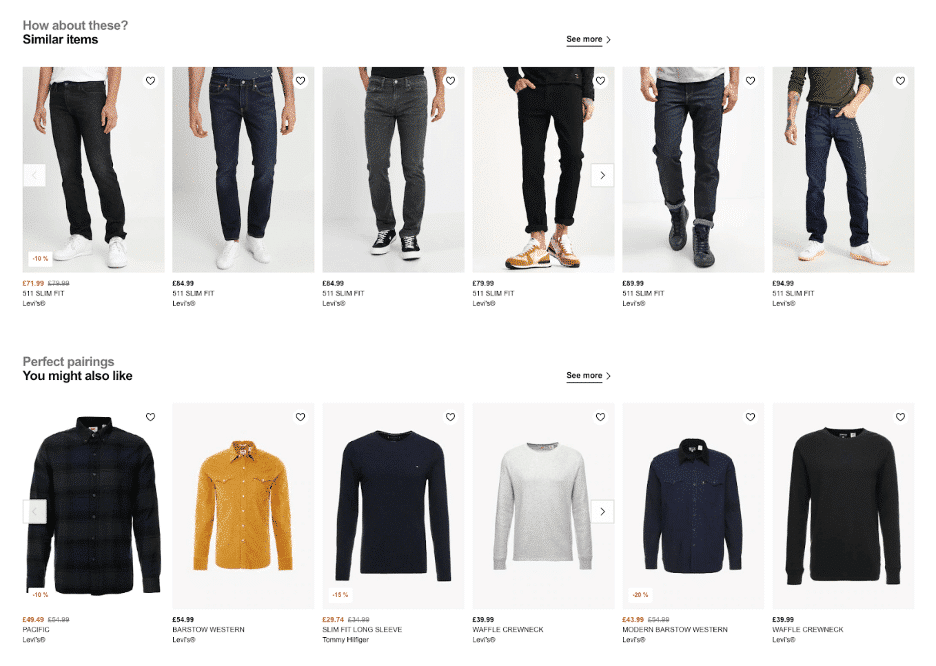It’s time to change our customers’ perspectives about the buying process (and ours, as retail marketing pros, when it comes to the sales process).
We’ve all heard some of the negative connotations associated with “cross selling” and “upselling”, such as unethical sales strategies, pushy sales people, and rambling irrelevant sales pitches.
In reality, it is our job as salespeople to understand if and how additional products or services could benefit our customers (or potential customers) and present it to them so they see the value in adding to their purchase.
Customers have already trusted you enough to buy from you, so use that trust to uncover additional needs which will ultimately increase the sale and benefit your wallet and their experience. People buy for their needs, not yours.
Cross selling and upselling are key strategies to bring in more revenue from customers, but how do you know if and when to implement them? How do you increase revenue effectively using these strategies? Let’s explore.
The Difference Between Cross Selling and Upselling
In general upsells aim to get buyers to spend more in a single transaction by presenting a more appealing, albeit more expensive, package or product. Cross-selling means conveniently offering related or helpful products to address other needs, tasks or wants that likely accompany a shopper’s initial purchase or cart.

Let’s use an easy analogy with a cell phone service plan. A potential new customer comes in to sign up for a phone plan. While going through your sales process with them, you discover that the customer is using an outdated phone and has really slow internet at home. The cross sell here would be showing the customer the benefits of purchasing a new phone, external battery, Bluetooth headphones, etc.
An upsell would be something like increasing the specifications of the contract to provide a personal hotspot, wifi extender, or extended plan with perks to the customer like discounts on additional phone lines.
Effective Cross Selling and Upselling Strategies
► Use Customer Data. Take into consideration the customer’s lifestyle, age, and habits. Would your options in a cross sell be relevant to the customer? Will adding on or upselling services fit their needs? Uncover ways to improve your customers’ experience and ask questions if you’re not sure. Never just assume their habits, you could be missing out on potential opportunities.
► Sell at the Appropriate Time. Once your customer, or potential customer, has agreed to work with you, they believe you’re the expert. Show them you understand their needs by repeating things back to them that they mentioned. Going back to the phone plan analogy, something like “Since you mentioned internet connection issues on the road causes frustration during the work day, a hotspot would ensure you are connected at all times —does this sound like something that would help you?” or “This type of service plan worked for you in the past, but could you see yourself using faster internet moving forward to make life a little easier?” Again, uncover the needs before you suggest add-ons or you risk making a wrong assumption about a customer and losing the whole sale.
► Suggest Bundles. Your customer needs to see the benefit in purchasing additional products or services. Make sure you are offering bundle packages, which are an easy way to show a benefit with a discount. If you don’t already offer bundles, strategize what types of products or services work well together to improve customer experiences that you can pitch to future customers. Allow the customer to visualize (literally or figuratively) the value in purchasing a bundle from you.
► Provide Complimentary Products. Nothing in life is free, so make sure what you are offering as a complimentary product or service is relevant, useful, and part of a bigger picture.

Don’t give away the milk for free, but allow prospective customers to get a taste so they know that your services or products are trustworthy and reliable. This will drive customers back to you for more, and also expand your reach by potentially referring you to other people with a tangible product.
► Offer Transparent and Reasonable Pricing. Nothing screams shady quite like hidden costs and surprise line items. Give customers visibility into your pricing to reiterate that you are trustworthy. Even if your customer sees the value in adding on to their purchase, they might be immediately turned off if it’s exponentially higher than competitors’ options. They should know their “out the door” price.
► Use Social Proof. You’ve got to prove that what you have to sell will bring happiness. Research where your customer base frequents most when it comes to social media and display your products, services, and testimonials there, using relevant hashtags. If you’re just getting started, post introduction videos or slides that show your personality and brand so customers can get to know you.
► Send Reminder Emails. Now more than ever, out of sight is out of mind. Gently remind customers via email about your offerings, showing the benefit to them. Keep the advantages focused on satisfying customers’ needs and outcomes, not your benefit. Always include a call to action at the end of your message, which tells the reader what steps they need to take next.
Final Thoughts
The biggest missed opportunity in sales lies in uncovering a client’s needs. Not understanding the full picture leads to assumptions, which leads a customer to choosing a different service or provider, or to you missing out on potential sales dollars with cross selling or upselling options. Before a customer walks away from a sale or potential sale, know where you stand. Do you fully understand their needs? Asking additional questions will inevitably increase your reliability and customer trust, leading to more sales dollars. Don’t miss out on these opportunities!
Handpicked Related Content:












